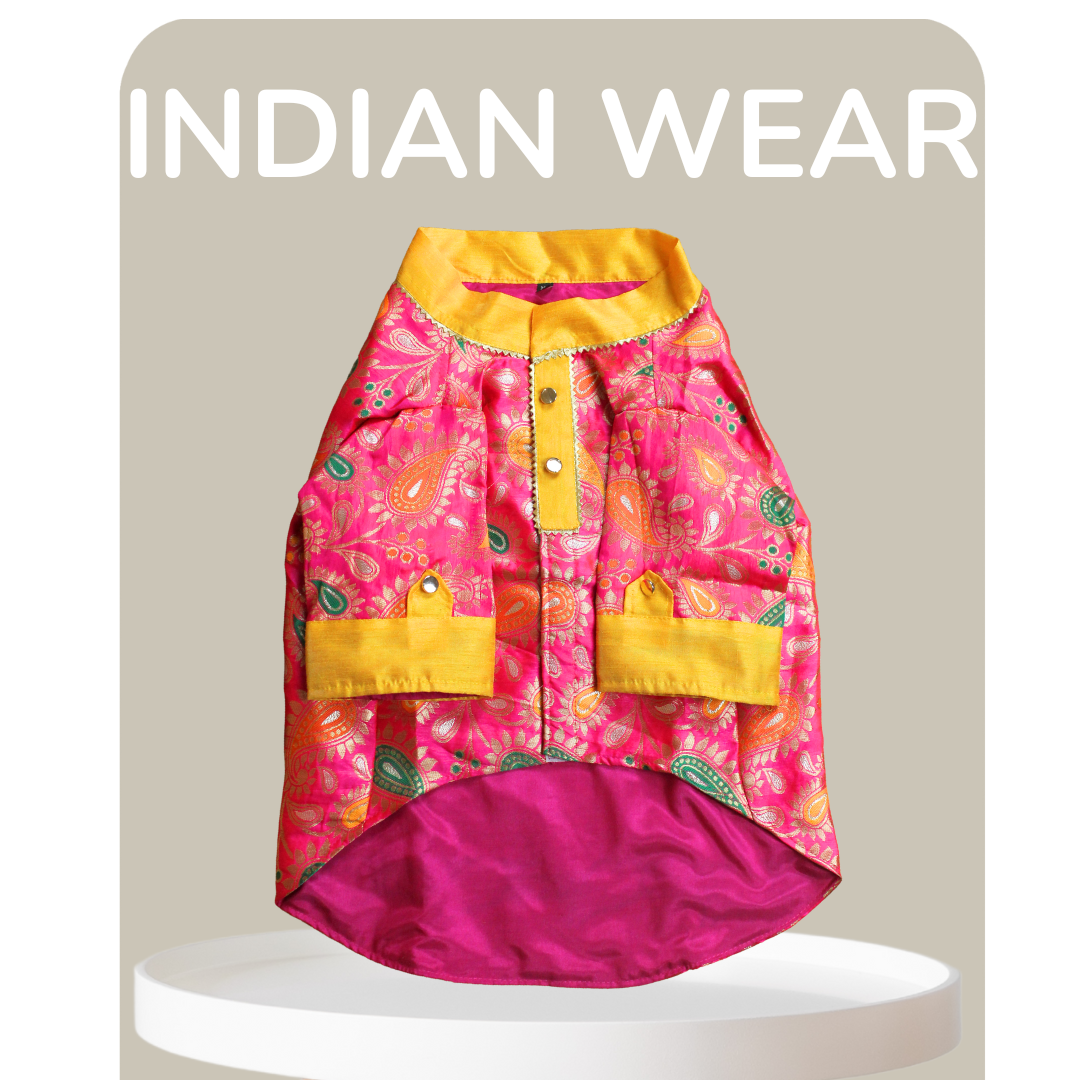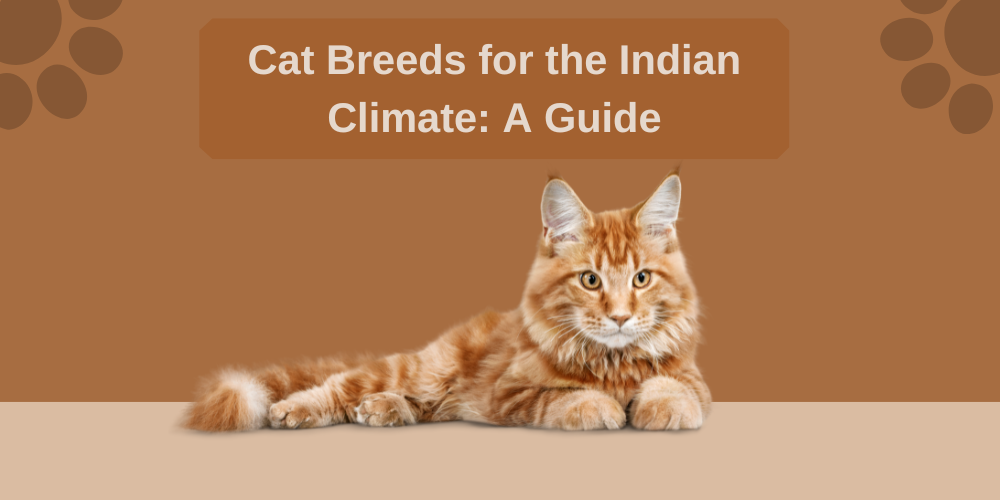India’s diverse climate, ranging from scorching summers to heavy monsoons and chilly northern winters, can pose a challenge for cat parents when it comes to selecting the right feline companion. While all cats have their charm, not every breed is equipped to handle the heat, humidity, or temperature fluctuations found in various parts of the country.
This guide explores the most adaptable cat breeds in India, emphasizing traits that make them ideal for Indian homes. Whether you're looking for the cutest cat breeds or the best cat breeds in India based on health, grooming needs, or temperament, we’ve got you covered.
Why Climate Matters When Choosing a Cat Breed
Cats are sensitive animals, and their well-being can be greatly affected by environmental factors.
In India, temperatures in summer can soar above 45°C in cities like Delhi or Nagpur, while regions like Kerala and Mumbai experience oppressive humidity.
Choosing a cat breed that naturally adapts to such conditions reduces the risk of health problems, overheating, skin infections, and stress-related behavioral issues.
Factors to consider:
- Coat type and length
- Tolerance to heat and humidity
- Indoor vs. outdoor adaptability
- Grooming needs
- Susceptibility to parasites and infections
- Best Cat Breeds for the Indian Climate
1. Indian Billi (Indian Domestic Cat)

Best suited for: All climates across India
The Indian Billi, or the native Indian domestic cat, tops the list for obvious reasons. These cats are naturally adapted to Indian weather, having evolved in this environment over centuries.
Traits:
- Short, sleek coat ideal for warm climates
- Highly intelligent and street-smart
- Independent but can be affectionate
- Excellent hunters and pest controllers
These are some of the best cat breeds in India for first-time cat parents due to their resilience, low grooming needs, and natural immunity to common local diseases.
2. Siamese Cat

Best suited for: Moderate to hot climates
Siamese cats are one of the most popular and cute cat breeds in India. They have a short, fine coat that makes them well-suited to warmer regions.
Traits:
- Extremely social and vocal
- Striking blue eyes and pointed coloration
- Requires mental stimulation and human interaction
- Sensitive to cold, so may need extra warmth in winters
Siamese cats thrive in households that can provide companionship and interactive play.
3. Persian Cat

Best suited for: AC homes or cooler northern regions
While undeniably one of the cutest cat breeds in the world, Persian cats are not naturally suited to hot and humid Indian conditions due to their thick, long fur.
Traits:
- Calm, placid, and great lap cats
- Require daily grooming
- Prone to eye discharge and respiratory issues due to their flat faces
- Ideal for temperature-controlled environments
If you're planning to adopt a Persian cat in India, make sure your home is well-ventilated and preferably air-conditioned during the summer months.
Also Read: Best Dog Breeds Suited for Indian Climate
4. Maine Coon

Best suited for: Temperate hill stations or AC homes
The Maine Coon is one of the largest domestic cat breeds and certainly among the cutest cat breeds due to its lion-like appearance and playful personality. However, its thick double coat makes it better suited for hill stations like Shimla, Ooty, or Darjeeling.
Traits:
- Very gentle and sociable
- Adaptable but needs climate control in hotter regions
- Requires regular grooming
- Great with children and other pets
Maine Coons in Indian cities require well-cooled environments to prevent overheating.
5. Bengal Cat

Best suited for: Warm and humid regions
Inspired by their wild ancestors, Bengal cats are highly active, sleek, and muscular. Their short, dense coat and high energy levels make them a favorite among Indian households with space for play.
Traits:
- Beautiful leopard-like spots or marbling
- Highly intelligent and curious
- Loves climbing and water
- Minimal grooming required
Bengals do well in warmer climates as long as they have access to cool resting areas and stimulation.
6. Bombay Cat

Best suited for: Indian plains and cities
The Bombay cat, developed in the U.S. to resemble a black panther, is another short-haired breed that handles heat well.
Traits:
- Glossy black coat
- Playful and affectionate
- Tolerates children and other pets
- Requires moderate grooming
It’s among the best cat breeds in India if you’re looking for a sleek, manageable, and apartment-friendly pet.
7. Himalayan Cat

Best suited for: Himalayan and hilly regions
A mix between Persian and Siamese, Himalayan cats inherit the long coat of the Persian and the coloration of the Siamese.
Traits:
- Regal and elegant
- Prone to matting and needs daily brushing
- Not ideal for hot regions unless kept in air-conditioned spaces
Because of their long coat and sensitivity to heat, they should only be considered in cooler parts of India.
8. British Shorthair

Best suited for: Urban Indian homes with moderate temperature
British Shorthairs are hardy and adaptable, with dense but short fur that helps them cope with indoor temperatures.
Traits:
- Round face and chubby cheeks, iconically cute
- Laid-back and independent
- Good for busy households
- Tolerates moderate grooming
They're one of the cutest cat breeds for urban cat lovers who don’t want high-maintenance grooming needs.
9. Abyssinian Cat

Best suited for: All Indian climates
Abyssinians have a short, ticked coat and a sleek, athletic build, making them naturally comfortable in Indian climates.
Traits:
- Extremely agile and intelligent
- Loves to climb and play
- Doesn’t enjoy being alone for long
- Needs mental stimulation and attention
They are an ideal choice for active families or individuals who enjoy engaging with their pets.
10. Oriental Shorthair

Best suited for: Hot and dry regions
With their short, fine coat and elegant body, Oriental Shorthairs are well-adapted to warmer climates. Their personality is much like the Siamese: vocal, affectionate, and energetic.
Traits:
- Large ears and almond-shaped eyes
- Loves being the center of attention
- Highly trainable and intelligent
- Best kept indoors
They are among the most cute cat breeds if you like exotic looks and quirky behavior.
Tips for Keeping Cats Comfortable in Indian Climate
Regardless of breed, here are a few things every cat parent in India should keep in mind:
- Hydration is Key: Always keep fresh, clean water available. Use multiple bowls around the house.
- Grooming: Short-haired breeds still shed and require regular brushing to prevent heat retention.
- Avoid Overheating: During summers, keep your cat indoors between 11 am and 4 pm. Use fans or air conditioning where possible.
- Monsoon Care: Ensure your cat’s resting areas remain dry to avoid fungal infections.
- Vaccinations and Deworming: Warm climates can increase the risk of parasites, so follow regular vet checkups.
Frequently Asked Questions (FAQ)
1. Which is the most low-maintenance cat breed in India?
The Indian Domestic Cat (Indian Billi) is the most low-maintenance breed. It requires minimal grooming, is resilient to local diseases, and adapts well to various Indian climates.
2. Are Persian cats suitable for Indian weather?
Persian cats are not ideal for India’s hot and humid climate due to their thick coats and flat faces. However, they can live comfortably in temperature-controlled homes with regular grooming.
3. What is the best cat breed for apartment living in India?
Siamese, Bombay, and British Shorthair cats are perfect for apartment settings. They are moderately active, affectionate, and adapt well to indoor life.
4. Which cat breeds are good for Indian families with children?
Bengal, Maine Coon (with climate control), and British Shorthair cats are friendly, playful, and patient, making them excellent choices for homes with children.
5. How can I keep my cat cool during Indian summers?
Provide clean drinking water at multiple spots, use fans or air conditioning, avoid exposure to direct sunlight during midday hours, and consider cooling mats or ceramic floors for resting.
6. Do short-haired cats shed less?
Short-haired cats like Siamese or Bombay shed less visibly, but they still shed. Their fur is easier to manage than long-haired breeds. Regular brushing helps reduce shedding for all types.
7. Are there hypoallergenic cat breeds suitable for India?
While no cat is truly hypoallergenic, breeds like the Bengal and Oriental Shorthair produce less of the allergenic protein Fel d 1 and may cause fewer allergic reactions.
8. Can cats live outdoors in India?
It's safer to keep pet cats indoors in India. Outdoor living exposes them to accidents, parasites, infections, and extreme weather. Enclosed balconies or windows with mesh are good alternatives.
9. How often should I bathe my cat in India?
Most cats clean themselves and don’t need frequent baths. However, during the monsoon or in humid regions, a gentle bath with cat-safe shampoo once in a while may help prevent fungal infections.
10. Which are the cutest cat breeds that also suit the Indian climate?
Siamese, Bombay, and Indian Billi are some of the cutest cat breeds that also adapt well to the Indian climate. They offer a great balance of looks and practicality.
Conclusion
Choosing the right cat breed for India isn’t just about how cute or trendy a feline looks, it's about their comfort, health, and long-term happiness.
While Persian or Himalayan cats may top the list of the cutest cat breeds, they demand significantly more care in the Indian context.
On the other hand, breeds like the Indian Billi, Siamese, or Bengal adapt beautifully to the climate with far less intervention.
Whether you’re an experienced pet parent or new to the world of cats, this guide should help you identify the best cat breeds in India that align with both your lifestyle and your local weather conditions.
A happy, healthy cat starts with the right choice, and a little informed love goes a long way.




